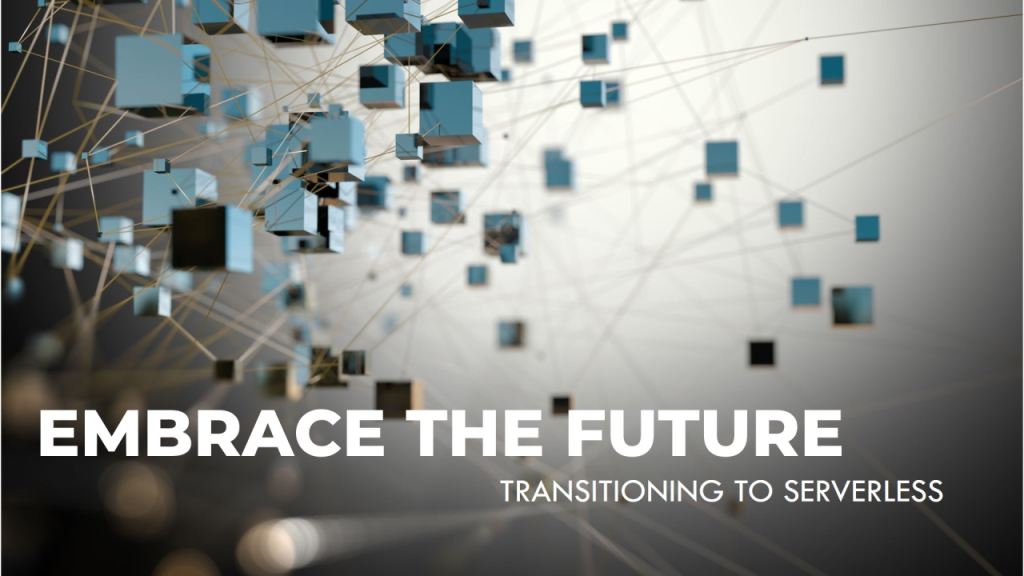The world of artificial intelligence (AI) has evolved at an unprecedented rate, particularly with the advent of Large Language Models (LLMs) like GPT-3, GPT-4, Transformers (Hugging Face), Bard, and BERT. These models are remarkable in their ability to generate human-like text, comprehend context, and perform a wide variety of language-based tasks. However, while LLMs possess impressive linguistic abilities, they also present several limitations:
- Hallucinations: LLMs can sometimes generate factually incorrect or nonsensical information, often confidently.
- Lack of real-time information: LLMs typically rely on pre-trained data, which may not reflect the latest information or real-time events.
- Limited reasoning and common sense: While LLMs can process information, they often struggle with complex reasoning, common sense understanding, and real-world grounding.
- Black box nature: The inner workings of many LLMs are complex and opaque, making it difficult to understand and explain their decision-making processes.
- Ethical concerns: LLMs can perpetuate biases present in their training data and may generate harmful or misleading content.
These limitations hinder the broader application of LLMs in real-world scenarios that require real-time decision-making, interaction with dynamic environments, and adherence to factual accuracy. Enter Agentic AI, a new frontier in AI development, powered by Retrieval-Augmented Generation (RAG), which aims to overcome these limitations by enhancing the capabilities of LLMs.
In this blog, we will explore how Agentic AI with RAG is changing the landscape of AI in critical sectors like healthcare and communication, particularly in contact centers using chat and voice bots, and conversational AI. We’ll also discuss the synergy between LLMs, RAG, and Agentic AI and provide examples to demonstrate their transformative potential.
Overview: What Is Agentic AI with RAG?
Agentic AI with RAG combines the generative power of LLMs with real-time data retrieval, allowing AI systems to access up-to-date information from external sources. While LLMs excel at processing and generating text based on pre-existing knowledge, RAG-powered Agentic AI systems can retrieve information from knowledge bases, documents, and the internet to inform their responses. This combination enables Agentic AI to not only respond with more accurate and context-aware outputs but also to take autonomous actions based on the retrieved data.
The synergy between LLMs, RAG, and Agentic AI makes it possible to build intelligent systems that can perform complex tasks, interact dynamically with users, and make decisions based on real-world data.
Definition: What Is Agentic AI with RAG?
Agentic AI with RAG refers to AI systems that:
- Use LLMs for natural language understanding and generation
- Retrieve data from external sources (such as databases, APIs, or documents)
- Make decisions autonomously or provide recommendations based on the data retrieved
This technology creates an AI system that not only produces intelligent text outputs but also interacts with its environment and takes actions autonomously, opening new possibilities in industries like healthcare and customer support.
Capabilities of Agentic AI with RAG
- Real-Time Information Retrieval: Agentic AI can query up-to-date knowledge sources in real time, allowing it to respond to rapidly changing data and ensure the accuracy and relevance of its responses.
- Autonomous Decision-Making: These systems can take autonomous actions based on the information they retrieve. This may include initiating actions like sending an email, scheduling a task, or even making complex decisions such as recommending medical treatments or providing personalized customer support.
- Contextual Awareness: By retrieving external data specific to the user’s situation, Agentic AI can generate responses that are highly relevant, precise, and adapted to real-world needs.
- Multimodal Interaction: Agentic AI is capable of handling both text-based and voice-based interactions, making it versatile across different platforms (for example, chatbots, voice assistants, and conversational AI systems).

How it Works
The core of Agentic AI lies in the interplay between an LLM, an external data retrieval system, and a decision-making process. Here’s how it works:
- User Input: The user provides a query or request (for example, asking a medical assistant for treatment options or a customer asking about an order status).
- Data Retrieval: The system queries relevant, real-time data sources. In healthcare, this could involve pulling up the latest medical research or patient records; in customer support, it could be accessing real-time customer data or product information.
- Data Integration: The retrieved data is integrated into the LLM’s processing pipeline. The LLM then generates a response that is informed by both the model’s pre-existing knowledge and the newly retrieved data.
- Decision-Making and Action: Based on processed data, the AI can autonomously take action, such as providing recommendations, making a decision (for example, approving a refund), or escalating the issue to a human agent.
Key Characteristics of Agentic AI with RAG
- Dynamic Data Interaction: Unlike traditional models, Agentic AI can access and use data from external sources, ensuring that its responses are always up-to-date.
- Autonomous Action and Decision-Making: These systems do not just generate responses; they also make autonomous decisions based on real-time information, streamlining processes like customer service, healthcare diagnostics, and more.
- Context-Driven Responses: By retrieving domain-specific information (for example, the latest medical guidelines or current product status), Agentic AI ensures responses are relevant and specific to the user’s situation.
- Multi-Platform Support: Whether through text-based chatbots, voice assistants, or integrated conversational AI, Agentic AI can handle various forms of communication, making it adaptable to different use cases.
Limitations of Agentic AI with RAG
- Data Dependency: The accuracy and effectiveness of Agentic AI are dependent on the quality, availability, and reliability of the external data sources it retrieves from. Incomplete or outdated data can lead to suboptimal outcomes.
- Computational Load: Data retrieval and integration can be computationally expensive, potentially affecting performance, especially for complex or large-scale applications.
- Privacy and Security Concerns: In sensitive domains like healthcare or customer service, Agentic AI needs to handle personal data securely and comply with privacy regulations (for example, HIPAA, GDPR).
- Bias in External Data: If the external data used for decision-making is biased, the AI system could reflect and propagate those biases, which is a particular concern in healthcare and customer support.
Domain-Specific Examples
Healthcare Example
In healthcare, Agentic AI with RAG can transform patient care by providing real-time, data-driven insights. Imagine a virtual assistant that helps doctors diagnose and recommend treatments for patients.
- Retrieval: The assistant retrieves the latest clinical research and patient-specific data, such as symptoms, medical history, and lab results.
- Processing: The system integrates this information and consults its training on medical knowledge to generate a recommendation.
- Action: Based on the recommendations, the assistant could autonomously suggest a treatment plan or escalate the case to a human doctor if necessary.
For example, if a patient presents symptoms related to cardiovascular condition, the virtual assistant may pull recent research on heart disease and suggest specific tests or treatments.
Communication Example (Contact Center – Chat/Voice Bots)
In a contact center environment, Agentic AI with RAG can enhance customer service by improving response accuracy and decision-making in real-time.
- Retrieval: The chatbot or voice bot queries a database for the customer’s order details or the latest product information.
- Processing: The system generates a personalized, context-specific response based on the data retrieved.
- Action: If the customer’s order is delayed, the system could autonomously offer solutions, such as expedited shipping or a discount.
This helps improve customer satisfaction by providing timely, personalized responses and proactive solutions, minimizing the need for human intervention.
Synergy Between LLMs, RAG, and Agentic AI
| Sr.No. | Feature | LLMs | RAG | Agentic AI |
|---|---|---|---|---|
| 1 | FeatureKnowledge Source | LLMsStatic knowledge learned during training | RAGDynamically retrieves up-to-date external data | Agentic AIAccesses external data and autonomously makes decisions |
| 2 | FeatureData Processing | LLMsProcesses input text based on patterns | RAGRetrieves relevant information to enhance outputs | Agentic AIIntegrates retrieved data and takes autonomous actions |
| 3 | FeatureContextual Relevance | LLMsGenerates context-aware responses from its training data | RAGEnhances LLM’s responses with real-time context | Agentic AIMakes informed, context-specific decisions based on real-time data |
| 4 | FeaturePersonalization | LLMsLimited personalization (based on training data) | RAGPersonalizes by retrieving domain-specific data | Agentic AITailors recommendations and actions based on user history and preferences |
| 5 | FeatureAutonomous Decision-Making | LLMsNo decision-making, only text generation | RAGProvides enriched output, but no autonomous action | Agentic AICan autonomously perform tasks, for example, sending recommendations, processing requests |
| 6 | FeatureAdaptability | LLMsStatic, limited by training data cut-off | RAGAdapts to real-time information from external sources | Agentic AIContinuously adapts based on evolving data and user interactions |
Conclusion
Agentic AI with RAG marks a significant leap forward in the evolution of AI systems. By combining the natural language generation capabilities of LLMs with real-time data retrieval and autonomous decision-making, it is possible to create AI that can provide real-time, personalized, and contextually relevant solutions. In sectors like healthcare and customer service, this technology has the potential to streamline operations, improve customer experience, and enhance decision-making.
However, challenges such as data dependency, computational complexity, and privacy concerns must be addressed to fully realize the potential of Agentic AI. As these technologies continue to evolve, we can expect even greater improvements in AI systems that not only understand and generate text but also act on data and make informed decisions autonomously.





